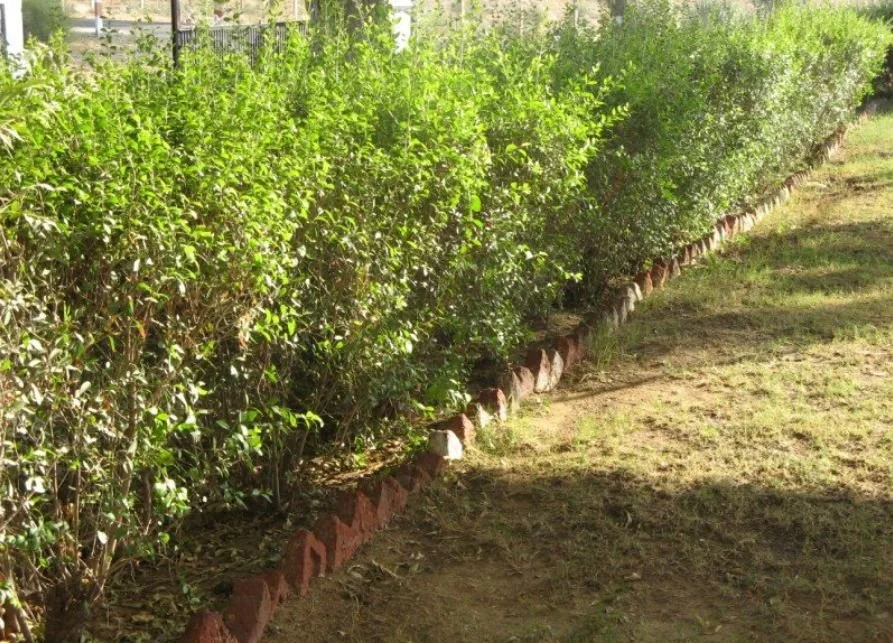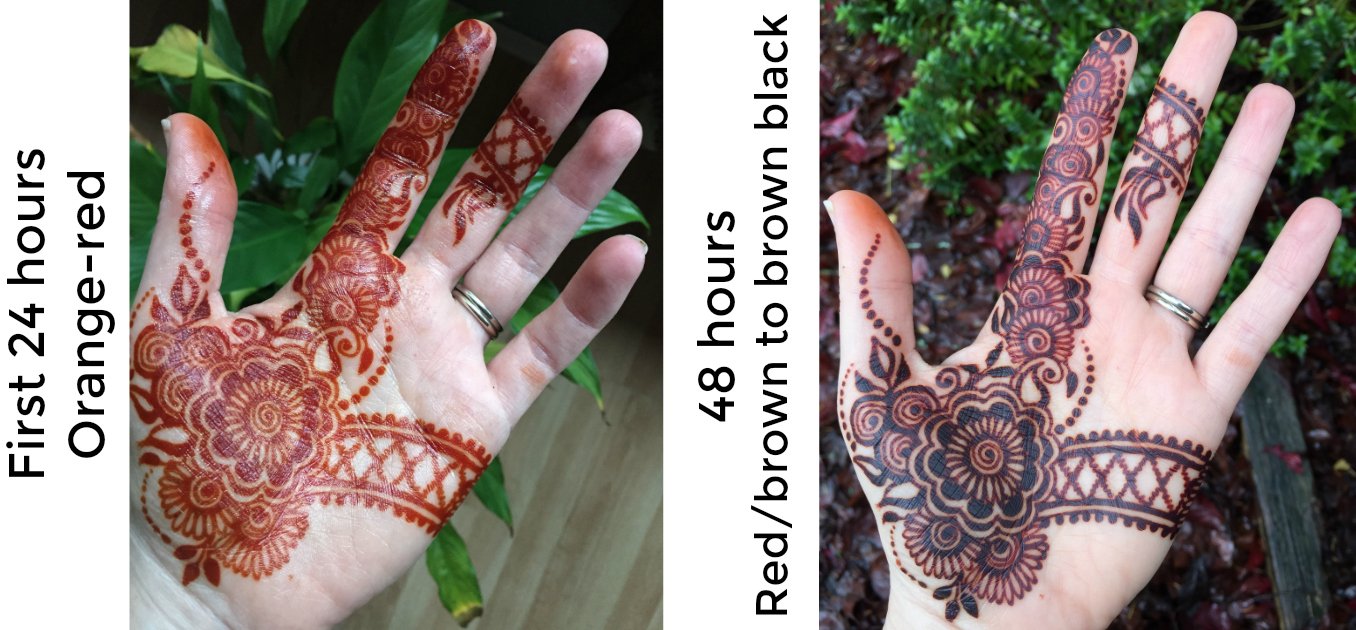What is Henna?
It’s one of the questions we get the most: “What is henna?” or “what’s the ink made of?”
Henna is a plant
Specifically, it’s a small tree or shrub. The leaves contain a dye that stains the skin, like beets or blueberries. In henna, the dye molecule itself is small enough that it can penetrate several layers of skin. That’s why the stains last a couple of weeks or so, versus a blueberry stain fading within a day.
A temporary permanent stain
What? Well, technically it’s a permanent stain. The dye molecule binds to the keratin in your skin, which is permanent. However, it only penetrates the outermost layers. Those layers are always naturally sloughing off and being replaced by new skin cells, and that process is what causes the henna stain to fade.
This is what makes henna temporary compared with a permanent ink tattoo. Ink tattoos use a needle to penetrate deeply enough that they will not fade away so quickly.
The Process
Henna artists make the paste for body art out of the dried, powdered leaves of the plant. It’s basically a mud.
The designs are drawn on with the wet henna paste. The paste needs to be left on for several hours to soak in.
Once the paste is removed, the stain will be a vibrant orange. This is temporary, because the henna will actually oxidize (like an apple) over the course of about 48 hours. It will eventually deepen to a reddish-brown to brown-black color.
Henna paste is removed after a few hours, and the resulting stain is initially a bright orange. It gradually oxidizes to a dark red-brown. It may be nearly black in solidly colored areas and where skin is thickest (like the palms or soles of the feet).
Henna Safety
Natural, unadulterated henna is extremely safe, and has been used both decoratively and therapeutically for thousands of years.
It’s extremely rare for someone to have an adverse reaction to henna. The Dermatology Online Journal writes, “Contact dermatitis as a reaction to pure henna is extremely rare despite its frequent and repeated use over thousands of years all over the world.” ¹ More often, people may be allergic to other ingredients used in making the paste, usually the essential oils. If you have allergies, you should always ask the artist about the ingredients in their paste.
Those with the rare disorder G6PD deficiency (or are allergic to aspirin or fava beans) should not get henna, nor should children under age 6 because they may have undiagnosed G6PD deficiency or other allergies.
Unfortunately, there are plenty of adulterated “fake henna” products out there. Companies wanting to mass-produce henna-like products with instant stains add synthetic chemicals that are not meant for skin. If you’ve heard about someone being allergic to henna, having reactions to henna, more often than not these “fake henna” products are the culprit. They’re cheap and usually found on eBay, Amazon or sitting on store shelves. Sadly, in recent years even Etsy is hosting sellers with these products.
Henna paste is not shelf stable - it must be kept frozen until ready for use. If the product looks to be mass-produced, is not stored frozen, or is shipped overseas, avoid it. Side effects from these products can range from blistering and scarring to even organ failure and death. We have an article about the dangers of chemical henna and how to avoid it.
¹ Wolf, Ronni MD; Wolf, Danny MD; Matz, Hagit; & Orion, Edit. (2003). Cutaneous reactions to temporary tattoos.Dermatology Online Journal, 9(1). Retrieved from: http://escholarship.org/uc/item/5dd6616d
Is henna safe for kids?
Henna is safe for kids as well as adults, as long as they aren’t allergic to the ingredients in the mixture or have been diagnosed with G6PD (above). Usually, allergies will be to one of the essential oils in the mix or possibly to the lemon juice. Allergies to henna itself are rare. That said, we generally don’t offer henna to children under age 6 due to the risk of undiagnosed allergies. If you’re getting henna from an artist you aren’t familiar with, check whether they’re certified with ICNHA and then ask for an ingredients list.
Therapeutic Benefits
While we here at SARAHENNA are focused on the artistic uses of henna, it has a long history of therapeutic use. We use henna to create henna crowns for those who have experienced hair loss during chemotherapy. Our clients have described their experiences as "healing", "empowering", and "warm". Learn More
Henna has a cooling effect on the skin. Some people have found it to be an effective relief from Hand Foot Syndrome (HFS/PPE), which is a painful side effect of many drugs including capecitabine, sorafinib and regorafenib. Read more about using henna for HFS relief in this journal article: http://www.ncbi.nlm.nih.gov/pubmed/24021017
Henna is an excellent conditioner for the skin as well conditioning and strengthening the hair. Note that this is different from many "henna" hair dyes found on store shelves, which typically include many other ingredients (some being quite harsh). The conditioning and strengthening qualities come from pure, natural henna (100% lawsonia inermis).
Hope you enjoyed this read! Leave us a comment below or get in touch if you have questions.









